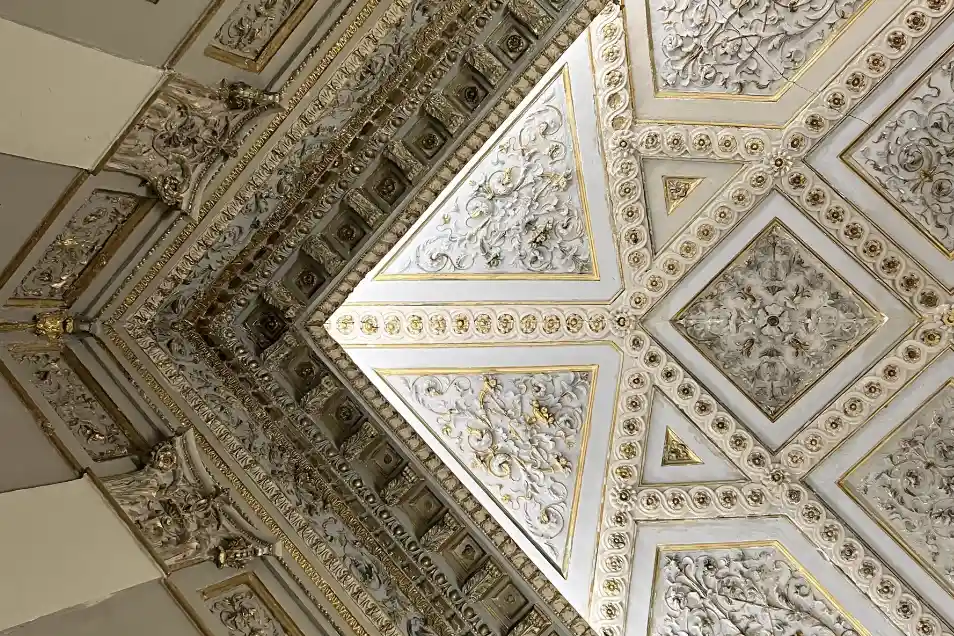Two years of renovation bears the signature of Giuseppe Corvaia – Grand Hotel et Des Palmes gives back to the city, recovering Ernesto Basile’s Art Nouveau interventions but stepping into the contemporary
The Grand Hotel et Des Palmes
The Grand Hotel et Des Palmes reopened its doors in June 2021, after 2 years of renovation work. It rededicated itself to the city in a new guise, but without forgetting its history and compromising the stylistic interventions that over time have made it a symbol of Art Nouveau culture and art in Palermo.
Grand Hotel et Des Palme today
100 rooms and suites, a Hall of Mirrors that houses a Mixology Bar in the center, and a Restaurant. A Sushi Restaurant on the Roof Garden Restaurant located on the fifth floor, a Gymnasium on the sixth floor. The Grand Hotel et Des Palmes was the first hotel to join the private partners of the Fondazione Teatro Massimo. The hotel’s owner, Rome-based Amt Real Estate together with the companies that took charge of the renovation, Zyz and Mare Resort, are contributing 205,000 euros disbursed over three years, aimed mostly at social promotion projects of music education for the benefit of individuals with autism and other pathologies.
The restyling, carried out in collaboration with the Superintendency, bears the signature of the Palermo-based firm of architect Giuseppe Corvaia.
Sicily: the English decade
A Sicilian story, that of the Grand Hotel et Des Palmes, with international roots, English to be precise. British soldiers and merchants arrived in Sicily in the early 19th century as part of the Anglo-Bourbon alliance against Napoleon. The English decade – 1806-1815 – contributed to the modernization of the Sicilian reality, starting from the political-institutional sphere and ending with economic, commercial and financial activities. Palermo and the whole of Sicily entered the English orbit during and after the Napoleonic continental blockade, enjoying the positive influences and fruitful grafts that the English resident on the island had in the different sectors of society.
Benjamin Ingham
Many Englishmen decided to stay on the island, even after the Napoleonic conjuncture, and they became increasingly numerous at least until the early twentieth century especially in Palermo, Messina and Marsala. Some of these merchant-entrepreneurs gave birth to real family dynasties that, over several generations, sometimes together with the local bourgeoisie, set up commercial, entrepreneurial and financial activities that constituted backbone structures of the Sicilian economy between the nineteenth and twentieth centuries.
Benjamin Ingham (a brand of Marsala, the beloved Sicilian wine in the United Kingdom, is still remembered of him), arrived in Sicily at the beginning of the English decade and created a veritable economic empire that would later be run for more than a century by his Whitaker grandchildren and great-grandchildren. In 1856 he decided to work on building a villa within the center of Palermo. The Inghams’ private nest stood in the shade of palm trees. A two-story central body, and a secret tunnel leading (still today) to the Anglican Church across the street from it on what is now Via Roma. Outside, an exotic conservatory reached all the way to the sea – today the dense urban fabric excludes a view of the sea.
Grand Hotel et Des Palmes: the history
In the late 19th century the house was sold to entomologist and hotelier, Cavaliere Enrico Ragusa, who converted it into a hotel, adding a floor to the structure. The hotel-the first in prestige in Palermo-soon became a hub of cultural life and a point of reference for those who were visiting the multicultural and international Palermo.
Richard Wagner in Palermo
Arriving directly from Bayreuth, the German composer Richard Wagner took lodging on the second floor of the Hotel des Palmes. Wagner is accompanied by his entire family (10 people). His wife is the daughter of the famous composer Listz and divorced from her first husband, another well-known composer, Hans de Bulow.
So on Nov. 5, 1881, the newspaper The Statute of Palermo gives news of the arrival in the city of the composer, who landed on the island with his wife Cosima, children, two servants and a governess with the intention of spending the winter there, due to health issues: he suffers from severe chest pains and the doctor has prescribed him to winter in the South and take long walks. Wagner remained in Palermo until March 19, 1882. For the island aristocracy, the German composer’s arrival would go down in history, surpassed only by Kaiser Wilhelm II’s visit in 1904.
The Wagner Presidential Suite at Grand Hotel et Des Palme
Wagner stayed in room 124 from November 5, 1881, to February 1, 1882. The suite today is named in his honor: the Wagner Presidential Suite, which features the original decorations and piano Wagner received from Franz Liszt. Despite his less than excellent relations with the then owner of the hotel, Chevalier Ragusa-apparently Wagner left without paying his bill-the story goes that the composer loved the atmosphere of the city and was immediately won over by the climate. Between the Grand Hotel et des Palmes and Villa Tasca, where he later stayed, the composer completed his last opera Parsifal, written with the acoustic characteristics of Bayreuth’s new theater in mind, where it was to be premiered on July 26, 1882, under the direction of Hermann Levi.
In 1907 Ragusa sold the hotel to the Cadore Hotel Society, which entrusted its transformation to Ernesto Basile, who made it a jewel of Art Nouveau. Glorifying its interiors in 1907 was the intervention in the Art Nouveau master Ernesto Basile – which the recent total renovation has not altered. Polychrome stained-glass windows create light effects as opposed to shadowy areas, the colonnades of the lobby offer a perspective view of the first floor, and the ornaments and furnishings of the main halls, such as antique furniture, majolica, porcelain and tapestries, transform the hotel into a city museum.




















